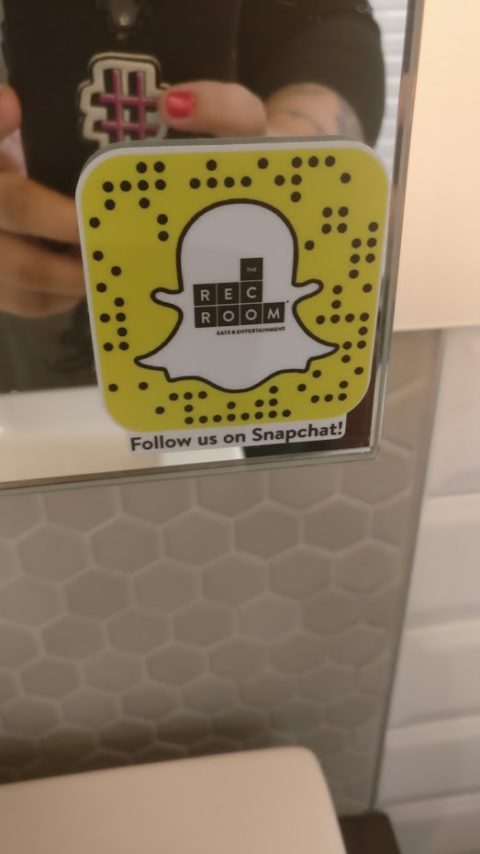If you think you missed the opportunity to join the Snapchat craze, it’s not too late.
As of Q1 2019, the social media app has over 190 million daily active users with 80 million of those users in North America.
So while others might not be talking about the photo and video messaging app as much as they used to, Snapchat is still a “big deal”, especially if your target audience is aged 13 to 24 years old.
On average, Snapchatters use the app over 20 times a day, and spend a daily average of 30 minutes on the app, resulting in 3 billion Snaps created daily.
With all the noise on social media, we’ve narrowed it down to 10 ways your business can take advantage of Snapchat and its engaged user base.
Snapchat Terminology
Before getting started with some easy Snapchat strategies, it’s important to understand the platform terms.
Snap
Taking a photo or creating a video with the capture button. Snaps can be viewed up to 10 seconds depending on the amount of time chosen by the Snapchatter and the snap will disappear once it’s been viewed.
Stories
A compilation of Snaps from the last 24 hours. Snaps appear in chronological order and create a narrative when viewed.
Discover
The Discover screen shows friends’ Snapchat Stories as well as content from top publishers who add content daily. Users can watch Live Stories from events and check out local or curated Stories they may be interested in.
Snapcode
QR code generated by Snapchat, each code is unique to each user.
Memories
Personal saved collection of past Snaps and Stories, backed up by Snapchat.
1. Stay Top of Mind
Just like any other social media platform, it’s important to remain consistent when it comes to publishing content.
With Snapchat, it’s critical.
Not only because Snaps disappear after 24 hours, but the newer your Snaps are, the closer they appear at the beginning of the Friends feed in the Discover tab.

2. Build Engaging Followers
This is where Snapchat is different from other social media platforms.
The user’s story feed is highly curated to what the user wants to see.
Why?
Because Snapchat makes users go out of the way to find friends and businesses to follow.
There are no hashtags to browse for new users to follow, nor are there typical newsfeeds that other platforms have.
Besides plainly telling people that your business is on Snapchat and mentioning your username, make it easy for them to find and follow you.
To start, create and save your Snapchat account’s Snapcode.
It will look similar to this:

With this Snapcode, users can now scan it with their phones to add your Snapchat account to their following list.
An easy way to build a Snapchat following is to promote your Snapchat on your social media channels and bring followers from other platforms to your Snapchat account.
It can be as simple as posting your Snapcode or Snaplink and by getting creative and sounding a bit mysterious or exclusive about what content is being shared on Snapchat.
The key is to make followers curious and have FOMO (Fear of Missing Out) so they want to follow your business’ Snapchat account.

Get creative with where and how you can integrate the Snapcode within your physical location or even on client-facing assets.


3. Go Behind the Scenes, Make It Exclusive
Believe it or not, your customers ARE interested in seeing what happens behind the scenes at your business.
Whether you share office culture or Snaps of your team preparing for an event, this is great storytelling content and allows your fans to feel like they’re part of your brand.


4. Share User-Generated Content
User-generated content (UGC) includes any type of media or text where the user is actually promoting a brand rather than the brand promoting itself.
Some popular examples of UGC include social media users sharing photos of their morning Starbucks, sharing photos of their meals and tagging the restaurant, tagging a brand that they are wearing, etc.
Sharing UGC is considered one of the more authentic ways businesses can use social media.
It not only makes customers feel included and apart of the brand but prompts others to create content as they want to be featured on the business’ social media as well.

5. Host Takeovers
A “takeover” is when someone else, other than the regular social media/marketing person handles your business’ Snapchat account for a specified length of time.
Making sure you’re working with a responsible and vetted person/influencer will help your Snapchat account attain some of the influencer’s followers, have a wider reach to different audiences and allow you to align yourself with an influencer for credibility.
Important note: Because you’re essentially handing the “keys” over to someone else, whether they’re part of your company or not, it’s important to have a set of guidelines to be followed.

6. Sneak Peek Product Launch
Make followers feel important by including them in early previews of upcoming product releases.
Use Snapchat to build anticipation, excitement, and demand for these products and followers will thank you by engaging with the content, possibly sharing it to their social media accounts and much more.

7. Exclusive Deals & Coupons
Take advantage of the 24-hour lifespan of a Snap by sharing exclusive deals and coupons for your business.
This relatively short time span puts the pressure on, not wanting to miss out on the exclusive sale or coupon, followers are more inclined to act fast before the Snap disappears.

8. Custom Snapchat On-Demand Geofilters
Geofilters are graphic designed “overlays” or “frames” which appear to users depending on their specific location.
For example, restaurants, conferences, and events can outline a geofence of their desired location and any Snapchat users within that geofence will be able to use the geofilter.

On-Demand Geofilters can be custom created by businesses to showcase their brand.
They are so affordable (starting at around $5 for 20,000 square feet) that some users even create On-Demand Geofilters for private events such as weddings and birthday parties.

9. Make Use of Snap Ads
Snap Ads are portrait full-screen images or videos.
They drive traffic to your website, video, or app using the Swipe Up feature.

Snapchat’s Ads Manager is similar to Facebook’s and will walk you through the process, step by step.
It’s important to note that while Snapchat’s interest targeting is nowhere as near in-depth as Facebook’s there’s still the opportunity to target users based on their long term lifestyle interests.
For example, “Makeup” isn’t a target you can select, but “Beauty Mavens” is.

You may have to get creative with the interests targeted or if you’re not familiar with “Lifestyle” interests, it’s recommended you scroll through the entire list to make sure none that are applicable have been missed.

Even though Snapchat’s active user base isn’t as large as the major social media players like
Facebook or Instagram, if your audience is active on Snapchat, you might find success on it.
Peak, a UK based training app, was able to drive 1.7 million downloads in the first two months of advertising on Snapchat and it cost them 50% lower per install than other platforms.
Test out Snapchat Ads with a smaller spend budget to see if they’re for your company before jumping in with a large budget.
10. Get Creative & Have Fun

Snapchat can be a lot of fun to use on a personal level: users play games, create short videos, and use funny face lenses.
Your business on Snapchat should be no different and each Snap should be tailored specifically for your Snapchat audience, (that means no crossposting LinkedIn content to Snapchat!).

Remembering the majority of users are younger, and there is a lot of noise, and competition to set yourself apart on the Stories feed.
Boring or average content won’t perform well, get creative!
Inject some fun and playfulness into your Snapchat strategy and you’ll build loyal customers and fans of your business.
Image Credits
Featured Image: Paulo Bobita
All screenshots taken by author


